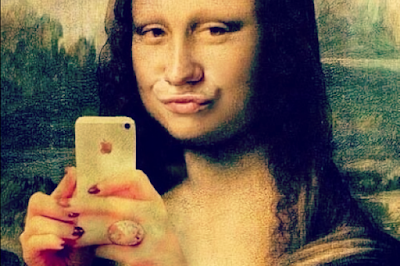Earlier this month, a young man “mucking around” as a tourist in western Australia fell 40 meters to his death while running and jumping on rocks along high cliffs taking selfies. His friend said of him, “It was like his hobby to take pictures [of himself] in each and every moment.”
Deaths by selfie are on the rise around the world. An 18-month study of the phenomenon in 2014-2016 found that more than half of the world’s selfie deaths took place in India, with 76. Pakistan came in second, with nine. The United States was third, with eight. More people die each year from selfie-related falls than from shark attacks.
Self-expression is inherent in Creation. It is natural to peacocks, poppies and people. The Psalmist says that even the skies over our heads express themselves:
Day after day they pour forth speech; night after night they reveal knowledge. They have no speech, they use no words;no sound is heard from them. Yet their voice goes out into all the earth, their words to the ends of the world. (from Psalm 19)
Self-expression is a healthy activity. Ralph Waldo Emerson, in his essay, “The Poet,” said, “The man is only half himself, the other half is his expression.” We are not completely ourselves if we cannot express who we are and what is on our minds and hearts. We become frustrated people when we cannot express our emotion and energy through visual arts, music, dance, language and the like. Expression is a release of power, and each of us desires to exert power in the world.
The selfie as a form of art becomes problematic, because it focuses exclusively on the self. The selfie enables the self to produce an endless number of self-portraits on demand. Most of us are all quite boring people with boring faces. Even famously beautiful faces like those of Marilyn Monroe or George Clooney become a bore to look at after a while. If a selfie is going to continue to express the self in an exciting way that will generate coveted likes on Facebook (and why else would one upload so many selfies?), then each selfie must appear in ever more daring, exotic, or absurd contexts. It will need a backdrop of a beautiful ocean sunset, a silly donkey looking over one’s shoulder, or the hazard of a cliff’s edge.
The problem is precisely those dangerously high and nigh precipices. There is danger enough walking at cliff’s edge while fully attending to one’s every footstep. Foolishly sauntering along a rocky precipice while artfully framing your face within a smartphone screen is not advisable.
Beyond the risk to life and limb, there is a destructive spiritual element of the selfie phenomenon. Excessive selfie taking may point to a spiritual vapidity and shallowness of soul. That is not to say that taking a self photo and uploading it to the internet makes us vainglorious and vaunting. We naturally like for our friends and family to see where we are and what we are doing. Some like to share a new hat “stole” at a bargain price. Others like to show their bros the front row seats they nabbed at the ballgame . Some like to capture and share their experience of hiking or boating with beautiful, natural backdrops. But wisdom literature throughout the ages has warned against the spirit that fuels the excessive selfie culture.
Ancient religion and mythology caution against excessively staring at the self for too long or desiring others to look upon us. In Greek mythology, Narcissus, the son of a river God, was admired for his unmatched beauty. His mother was told by a blind seer that Narcissus would have a long life, provided he never saw his own image. However, when Narcissus approaches a pool and sees his striking image, he falls in love with his own reflection in the waters and refuses to leave the waters’ edge. He pines away there until he dies of self-admiration. Jesus taught that desiring to be seen is an unflattering quality and a sign of spiritual immaturity. He made fun of the “hypocrites” who prayed aloud on the street corners and in the synagogues “to be seen by others” (Matthew 6:5 NIV). Paul anticipated the selfie culture’s tendency to provoke conceit and envy, by writing, “Let us not become conceited, provoking one another, envying one another” (Galatians 5:26).
My criticism of the selfie culture is that as a form of expression it does not offer much by way of improving culture. Most of us will not design cathedrals or write classical masterpieces, but there are many humble forms of self-expression that improve the self, the tribe and the culture. Expressing oneself through music-making, painting, writing (even a mediocre blog such as this one), quilting, mindful child rearing, and woodworking, for example, tend to make us better individuals and improve society. These endeavors tend to turn our gaze away from our own image and toward developing a personal skill, offering a gift to others and augmenting our community life.
We are each appointed a day and time when we will fall off the cliff into an unknown beyond. I suggest we do not hasten it by taking selfies along the cliff! I also advise against inviting spiritual death through excessive participation in the selfie culture. We need to offer to ours and future generations not a quick selfie but a well-designed, enduring self-portrait that affirms the gift of life and leaves behind something beautiful, however humble that endeavor may be.
